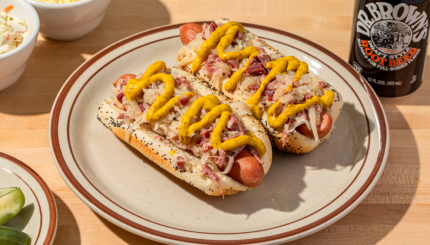Looking around my apartment, it’s not necessarily easy to tell that it’s a Jewish home. I didn’t affix a mezuzah (scroll containing the Sh’ma) to any of my doorposts. My Shabbat candlesticks are in a cabinet because my landlord doesn’t allow candles. My tallit is on a shelf where it is only removed for Saturday morning services.
At a glance, my apartment is no different from any other apartment in the complex here in Jackson, Mississippi. It’s got a half-full pantry, a used futon, an old TV, and some books. But looking a little deeper, getting to know me and my home, the ambiguity of the space is cleared, making way for the image of my Jewish home to shine through. I’ve always joked that Judaism is a religion of maximalism. I think what I really mean is that the material culture of my Judaism is latent in nearly every object I own (which is way too many objects, by the way).
Quite possibly the most overtly Jewish thing in my home is my bookshelf. It’s stocked with the siddur I received for my bat mitzvah, the prayer book I helped write and design for my college Hillel, Hebrew textbooks, and Jewish fiction and nonfiction. As an addendum to this very Jewish bookshelf, I also have a very Jewish movie collection. The Princess Bride, When Harry Met Sally, Dirty Dancing, RENT, and many more movies with Jewish directors, writers, themes, and characters grace my living room. These small areas of my apartment show not only my religious connection to Judaism, but also my connection to Jewish culture and to the Jewish traditions of learning and entertaining.
My kitchen definitely doesn’t look Jewish. It’s not a kosher kitchen, for one, so there are very few outward signs that it’s a Jewish space. But the yeast, flour, and eggs I have are used almost exclusively for challah-baking. My apron, made with love by my mother, has stains from when I learned to render schmaltz (chicken fat) for making my grandmother’s kasha varnishkes (buckwheat and bowtie pasta) and when I attempted to recreate the art of my mom’s matzah ball soup. Food is a huge part of how I connect with my culture and heritage, so every time I see these little details, I am reminded of who I am and the wonderful people who taught me how to be who I am unapologetically.
In my closet are a few things that to me carry a wide array of religious memories and meanings. My first tallit from my bat mitzvah and the new one my sisters bought me upon my acceptance to rabbinical school are important symbols of mitzvot, as well as a couple of momentous Jewish life and lifecycle events. My dresses, most of which have not been worn since the beginning of the pandemic, carry in their threads reminders of the heady summer sunshine that came with Shabbat at camp. A sundress from Target might not be Jewish, but to me it’s a memento of a summer of living and learning Jewishly.
As a young Jew making my first home on my own, knowing that buying a mezuzah and kosher scroll for every door and a menorah and a Seder plate wasn’t necessarily a financial possibility, I’ve learned to redefine what it means to have a Jewish home. While I value the traditional Judaica I do have, it strikes me as equally important to feel that my home is Jewish and to show it in the ways that I can.
We all know Judaica is expensive—perhaps even prohibitively so for people without family heirlooms and gifts they can use. But Jews by choice, young Jews setting out from home for the first time, and working class and poor Jews should never be made to feel less Jewish for what they can or cannot buy.
So I’m proposing a redefinition of Judaica from the narrow scope of Jewish ritual objects to the wide array of things we all own that remind us of our Judaism. That book about finding meaning in life? Judaica. Those slacks that have only ever been worn to services? Judaica. The kitchen gadget used exclusively for Jewish food? Judaica.
To me, this redefinition of Judaica is also about redefining what it means to have a Jewish home. Judaism is about so much more than ritual observance, so it only makes sense that all of the things that remind us of our Jewish identities or helped us form a Jewish consciousness—all the things that make up a Jewish material culture—should be termed Judaica.



